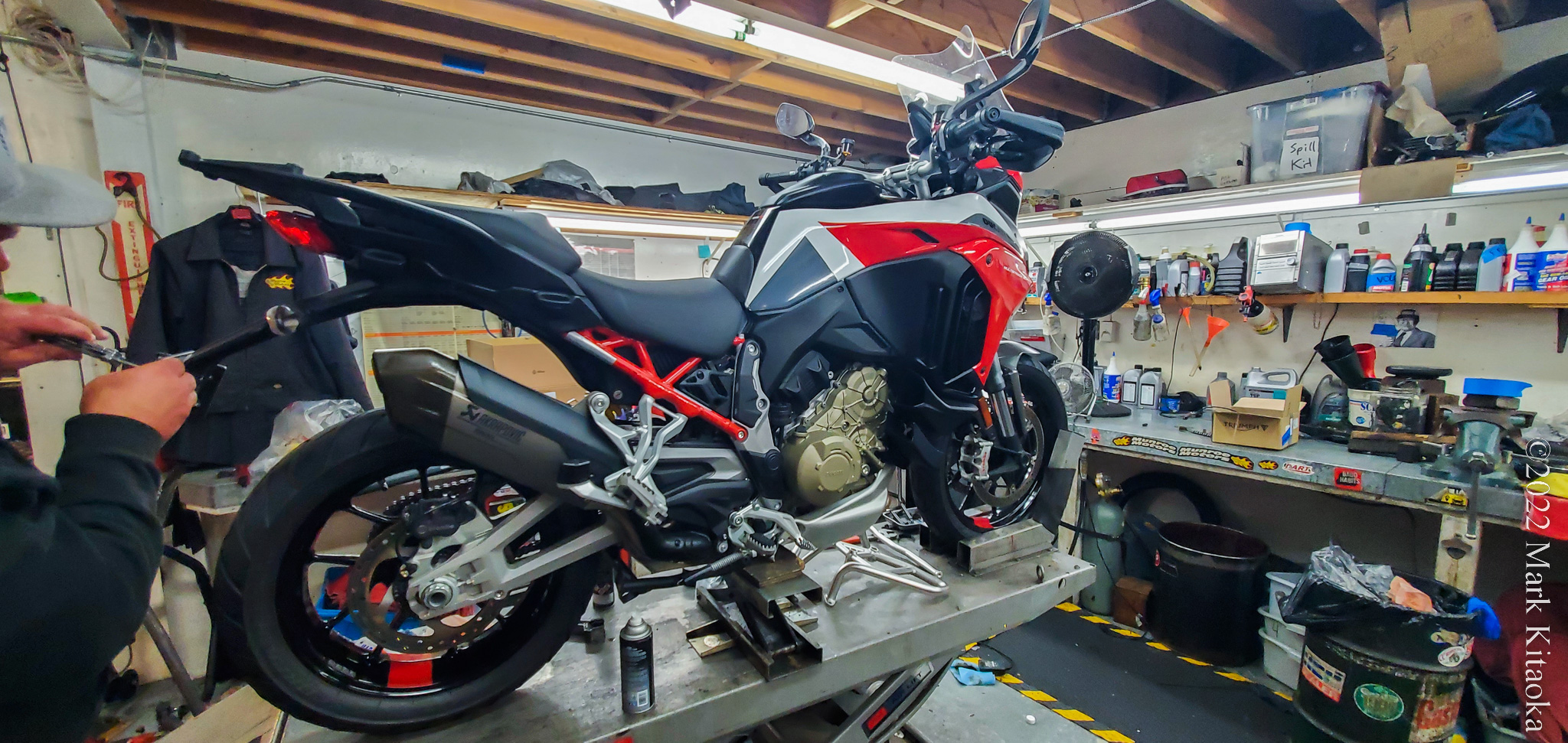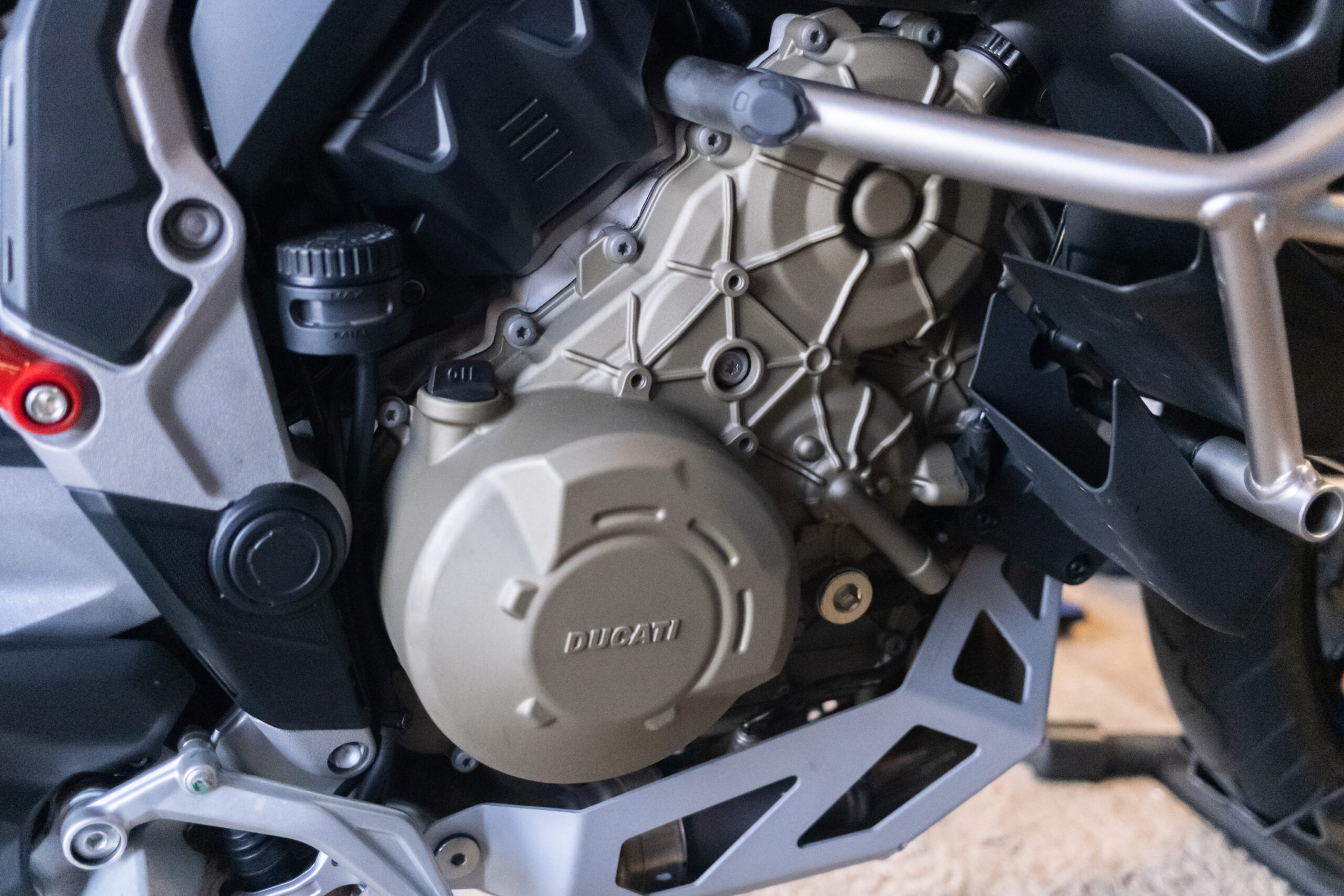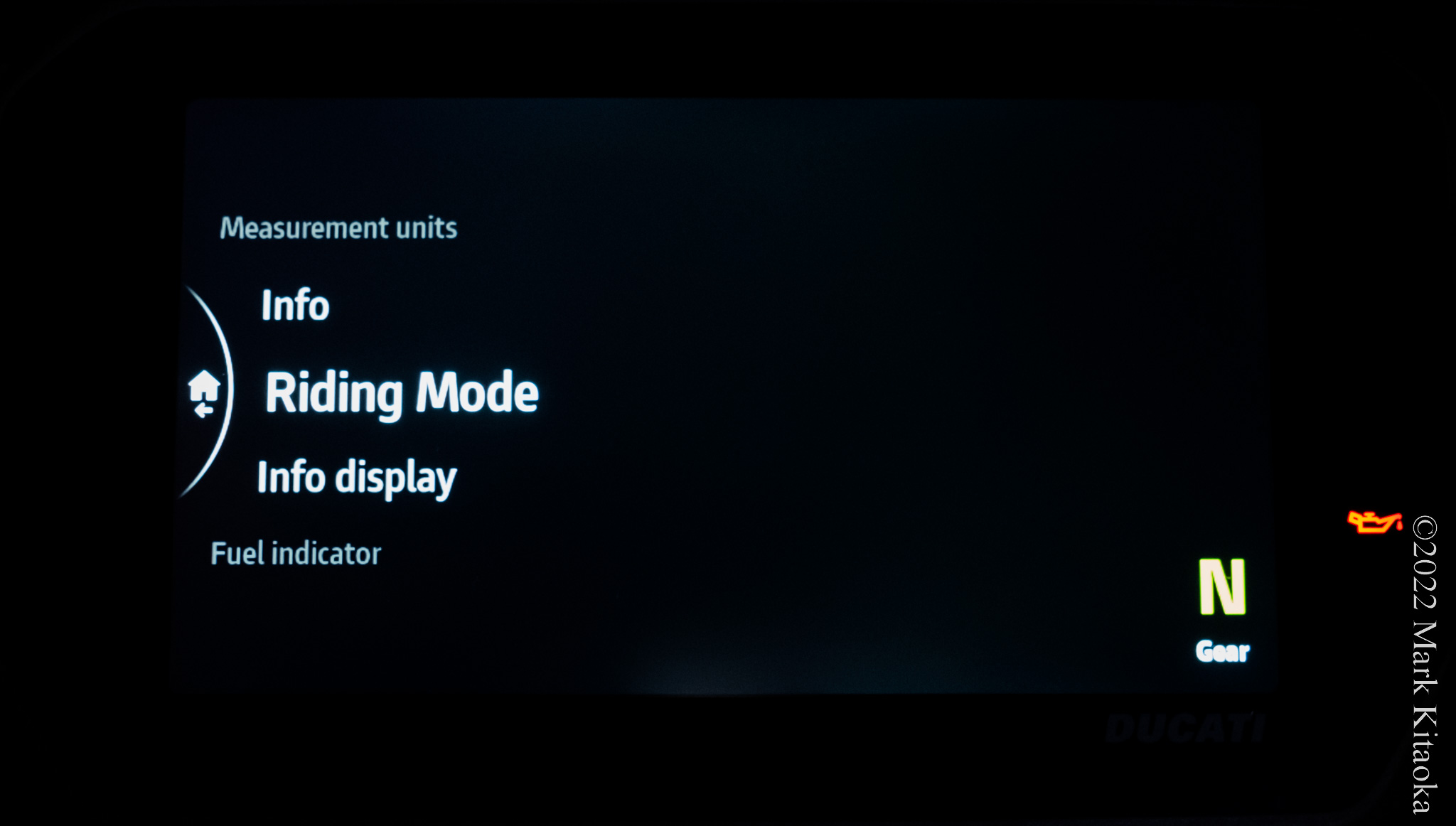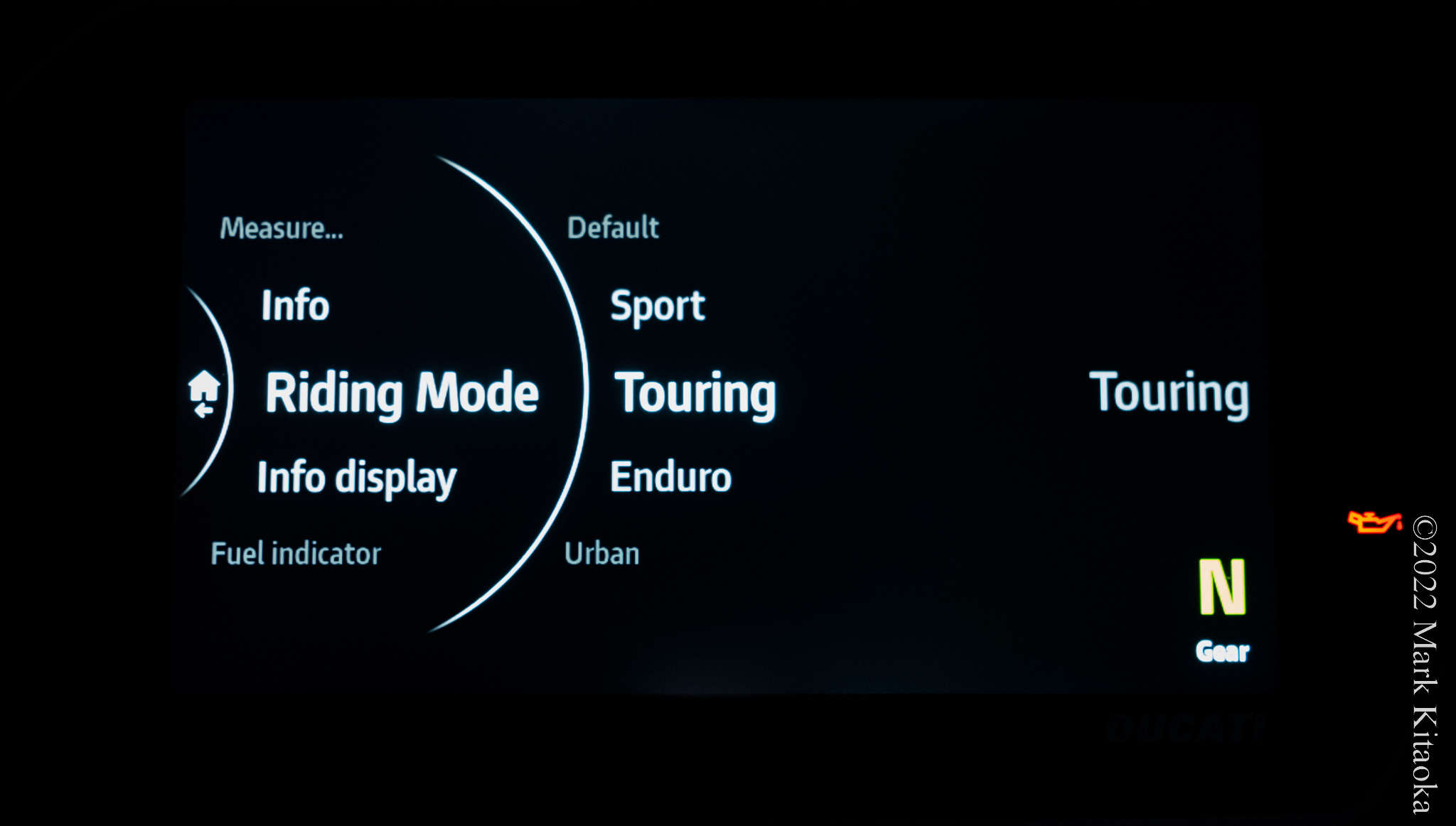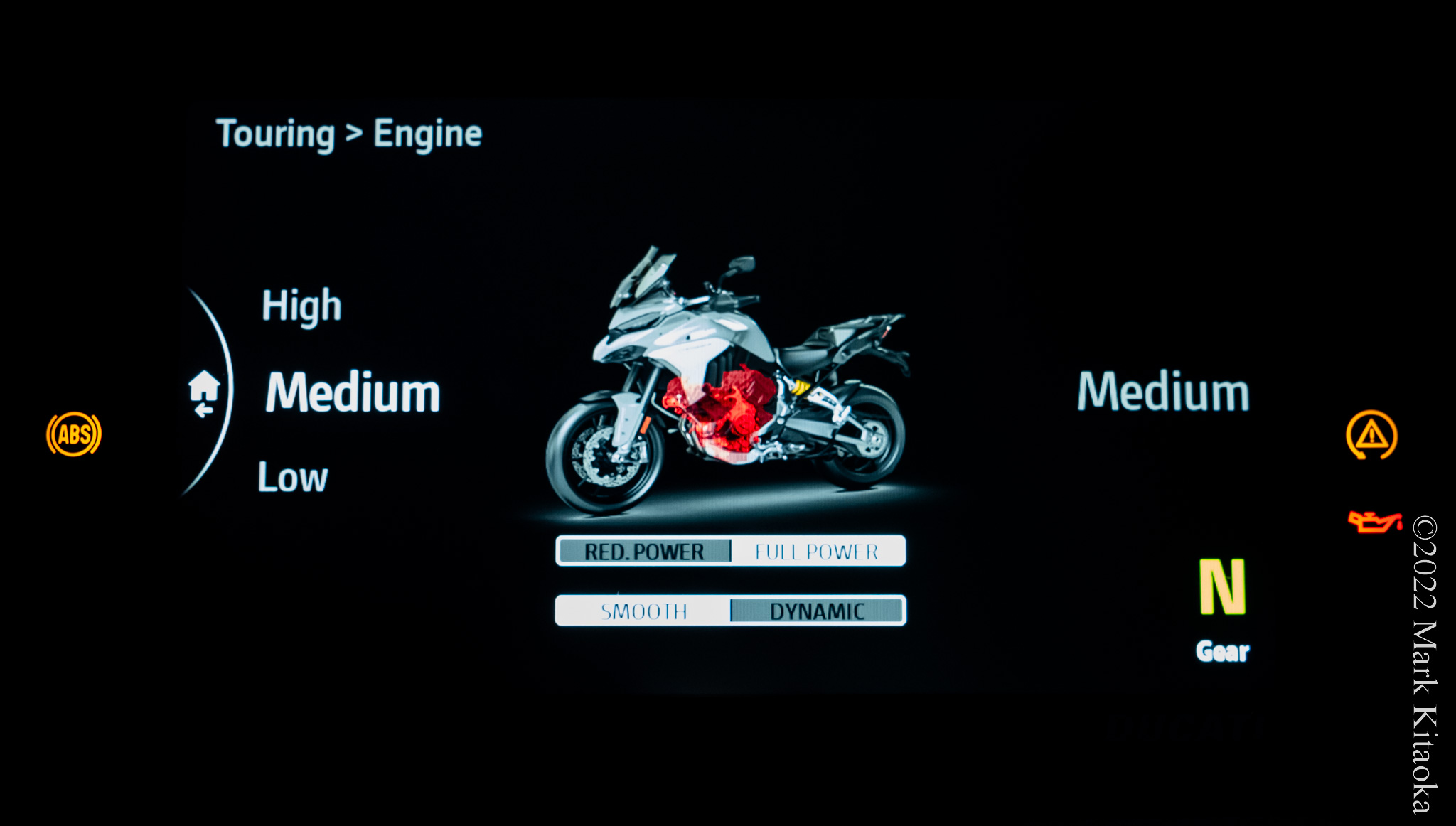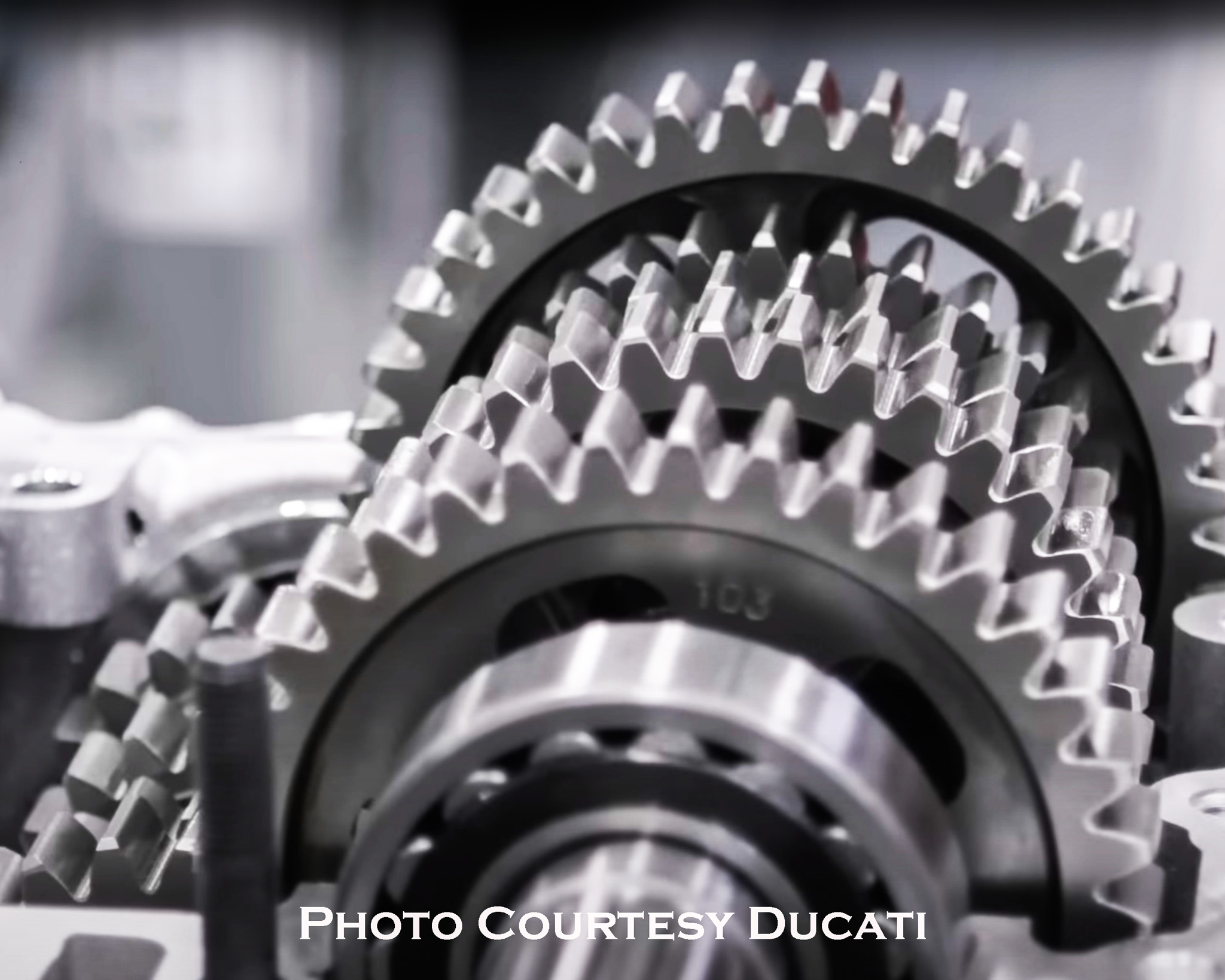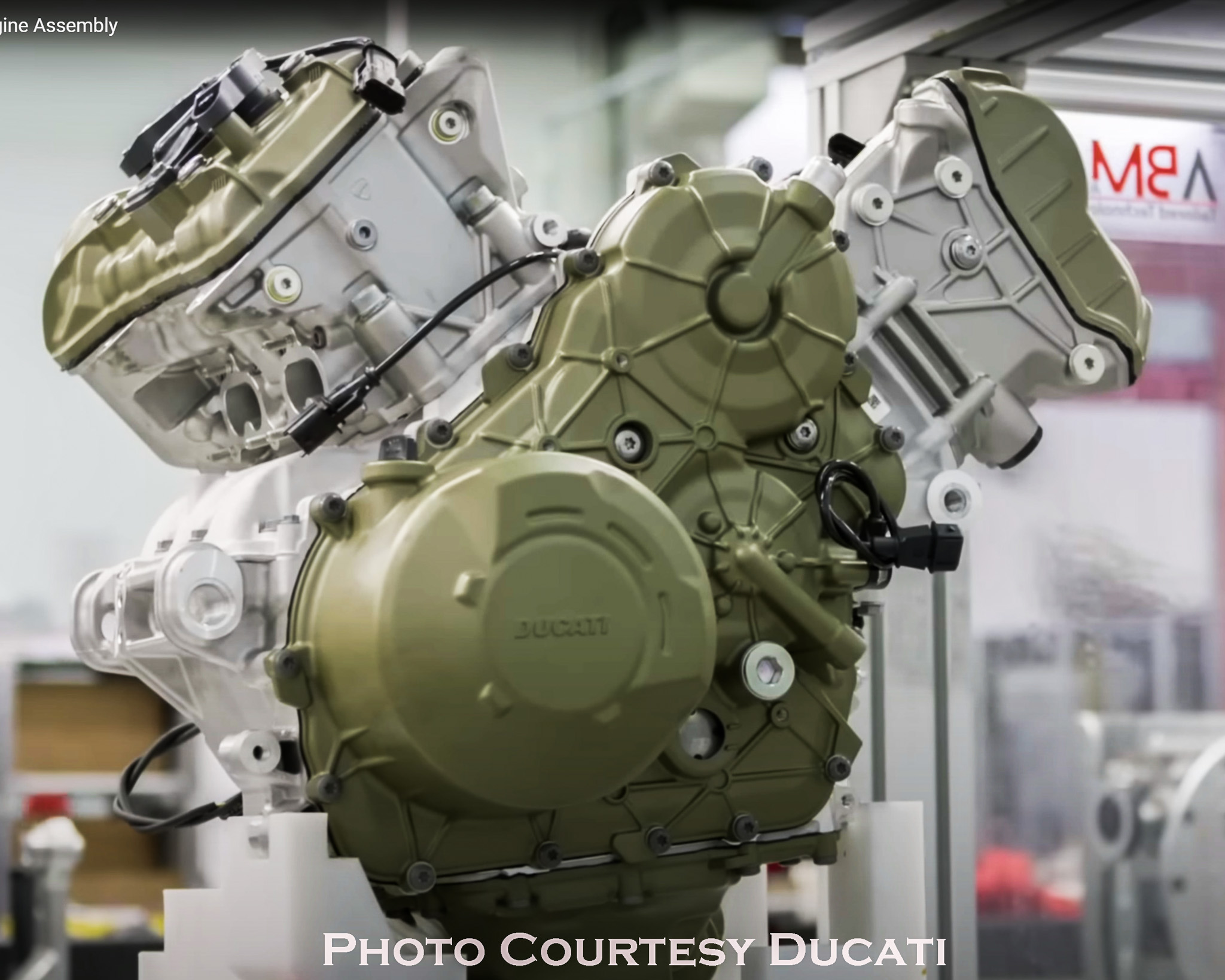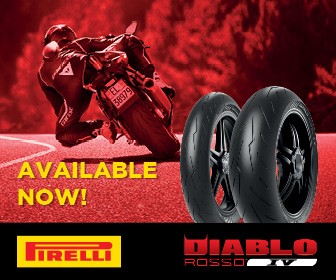2022 Ducati Multistrada V4S Sport – An Owner’s Perspective
2022 Ducati Multistrada V4S Sport – An Owner’s Perspective
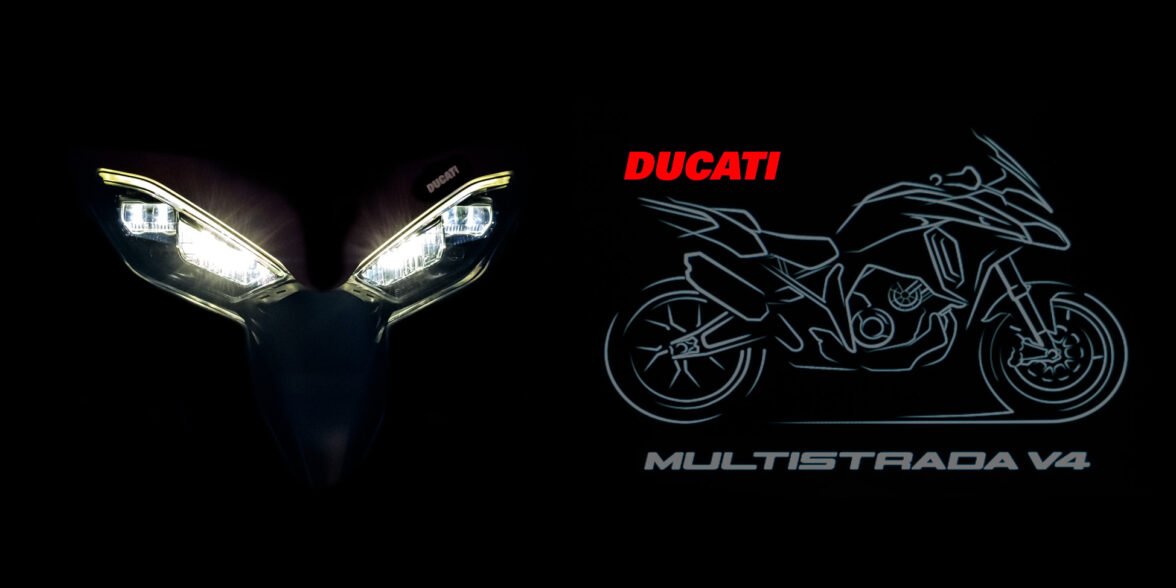
Editor’s note: This review is unique in that it provides an in-depth and exhaustive look at the ‘22 Multistrada V4S Sport. If you’re a regular webBikeWorld reader, that the review is a small novella probably isn’t surprising to you – Mark worked hard to provide an incredibly insightful and comprehensive look at this bike.
The review summary distills the key points into bullets; we invite you to dig deeper if you want the details behind Mark’s perspective. This is easily the most thorough assessment of this bike you will ever read.
Review Summary
Aesthetics, Design, & Ergonomics
- The fourth generation of Ducati’s Multistrada looks are unmistakably Multistrada, other than the monocoque frame replacing the traditional steel trellis structure.
- The design of the MSV4S compares to an MMA fighter in a tuxedo while holding the hand of his favorite six year old niece. Strong AF, but gentle at the same time.
- Ergonomically I feel like I’m on a Temperapedic foam couch suspended by the most incredible suspension that constantly adjusts in 10 milliseconds to what the wheels are encountering.
Drivetrain, Engine, & Transmission
- I’ve never owned or ridden a bike with a Quickshfter. So smooth, but not so much in lower gears around town.
- Engine is the child conceived when a v-twin has hot AF sex with an inline four.
Riding Experience
- Like looks, how a bike feels is SO INDIVIDUAL. Sure you can say “Wow so and so test editor says the MS is wonderful.” Another “MEH it’s not as good as this or that.” For me, it’s WONDERFUL.
Key Upsides
- Incredible suspension. Like having a pro suspension tuner adjusting the suspenders in 10 milliseconds as you ride…but better, no bathroom breaks!.
- An engine that for me defines Jekyll and Hyde or in today’s 2023 speak bipolar!
- Usable Tech that applies in the real world.
Key Downsides
- Expensive. Only 6K less than my parents first custom built 2100 sq. ft. 3br/2.5 bath home in California!
- Heavy and tall.
In-Depth: The 2022 Ducati Multistrada V4S Sport
I had hoped with all hope that my editor would allow me to title this piece, “An HONEST review of THE PERFECT, ULTIMATE, BEST, AND BETTER THAN Any Other Motorcycle for Plus Sized Senior Citizens.” I believe that he was fine with all of the words except for Plus Sized….
I sent my early 40ish-year-old pal Gabe this photo of my bike with my friend Julian sitting on it. Julian is a long-time Duck owner, also in his forties, with his 2014 V2 Panigale which you can see in the background. Gabe’s comment: “Looks great. I’m tempted by the touring bikes, but it kinda feels like taking that irrevocable step into admitting middle age.” When I shared his comment with Julian, HE FELT THE EFFING SAME!!!
I want to state up front that I’m against any clickbait titles that include, “Best” “Winner” “Perfect” etc simply because I find those things bullshit. What’s best for me does not mean it’s best for anyone else, plain and simple. And for me, the WORST statement in any title is “An Honest Review!” Does that mean unless you say ‘an honest’ everything you’re saying is an effing lie!!! In my former life, I was a trained interrogator. We were trained to pick up indications of lies and ‘an honest’ statement was one of those indicators. I understand that it’s “just a saying”, but it still bugs the crap out of me.
Unlike press launch rides, I’d like to think this article differs. For one thing, IT’S LONG and not a video. “Subscribes and Likes” don’t mean squat to me since I’m not making income off of those factors. One that is from an actual owner’s perspective, having owned and ridden the bike since September 2022, putting enough miles on the clock to give an owner’s initial assessment. Not a ton, but enough to give me a decent idea about the bike’s capabilities compared to my skill level. Much like a taking a new girlfriend on a multi-day vacation, the warts and jewels come out which are impossible to hide like on just a few dates versus on a 24/7 basis! That includes hers and MINE. When I watch marketing videos I tend to have a less emotional, more realistic eye since my day job involves imagery for marketing. Sales are driven primarily by emotion and seeing riders blasting down or up tough gravel or dirt roads, wheeling at 50+ MPH is all very cool. But the riders in those videos are often pros who specialize in those types of terrains and are hired by Ducati to make those videos, not to even mention the editing involved. I’ve never considered a new ‘thing’ will give me the skills to match that new thing; cameras, guns, motorcycles, etc. Nope, it takes skill, time, practice, and talent to master any tool.
Only owning the bike for a few months in no way represents what I consider to be a full assessment. In the past, a few months would suffice to cover a large percentage of features on my bikes. But with this bike, its sophistication and customization are so vast it would take me at least 8 months to get comfortable with most of the features. So to get this review out before the bike turns a full year old, well here it is.
I have done 3 tips overs too in less than one mile!!!! More on that later. All of my pals say I shouldn’t even mention that, that they would be embarrassed. I’m not.
Pros
- Electronically controlled semi-active suspension
- Liter size sport bike performance and handling in a comfortable package
- Ride modes are useful for where I ride and can be customized or left as is
- LED lighting including cornering lights
- Adjustable and comfortable heated seats, both rider and passenger
- Self-canceling turn indicators
- Blind spot warning indicators
- Vehicle Hold Control
- Excellent wind protection via an adjustable windscreen with side wind deflectors
- 37,000 valve adjustment intervals
- 9,000-mile or 2-year oil changes, whichever occurs first
- Fully backlit control switches
- Adaptive cruise control remains active during up or downshifting
- Keyless ignition
- Included pannier set, easy on and off. Incorporated mounting points, no rails. Rear mounting points swivel to adjust load during turns
- Tire plug repair and inflation canisters included
- Easy-to-use chain adjustment gauge
- The engine performs well in town or wringing it out
- Brembo Stylema brakes are wonderful. Great feel and modulation
- Three-level heated grips using just the right control button to activate
- Engine braking is strong like a V Twin
- OEM tires hold well on the tarmac, not bad on gravel roads
- Throttle control is refined and smooth
- Minimum preload feature very useful for a 30” or shorter inseams
- Electronic fork lock. Allows both left or right steering lock positions
- Incredible linear top-end power
- Docile and smooth low-speed power delivery
- Quickshifter for both up and downshifts with auto blipping
- V Twin feel in the lower rev range, inline-four feel in the upper rev range
- V Twin engine braking force
Cons
- The cell phone holder pocket is too small and becomes too hot for modern-sized cell phones
- The Ducati Connect app needs serious development for the user interface
- An intermittent dash black screen on start-up after the bike sits for weeks
- Intermediate to high ABS settings makes the brakes feel glazed
- Non-X ring chain installed
- Mirrors can be buzzy
- Tire (Tyre) Calibration does not improve speedo accuracy remains 12-17% over optimistic versus GPS speed measurement
- The rear brake pedal is too low, and not a lot of adjustment is available
- Pegs are too thin for standing for any length of time
- Quickshift upshifts are a bit bumpy at lower RPM
- Not a popular motorcycle class with the Botox and Liposuction crowd
- Inability to rename Modes (Princess whine)
- Gas cap requires a key * (Princess whines)
- Tire pressure monitors not included *
* Available as add-on options
Why I Chose the MSV4S
I have explained my desire for a dual sport bike in the review I’ve written for wBW on the Zero DSR. To recap, I’d always wanted a bike that I could RIDE to/from off-road trails for as long as I can remember. But since all of my bikes, before the DSR was purpose-built, meaning I’d need a truck or trailer to get there, the DSR was my first.
After owning the DSR for some time and riding it to/from off-road trails I discovered that the majority of my riding was on tarmac. My perception of my desire was different from my reality. In an article, I wrote about Why I Went Back to ICE from Electric Motorcycles I explain my reasons. In the comments, I was amused by how narrow-minded and myopic some can be. To each their own.
As a former road racer and racetrack instructor, suspension, brakes, and tire pressures are the elements that determined how fast and controlled I could go. So when I read about Ducati’s Skyhook suspension; its ability to adjust preload, rebound, and compression damping WITH A JOYSTICK I was blown away. Just a little knowledge passed onto me by the largest Ohlins Dealer in the world and the crew chief for Erion Racing gave me the confidence to adjust those things to my riding ability with a wrench and flat-end screwdriver. The ONLY element necessary to use a wrench to adjust any part of the MSV4S’ suspension is the front pre-load. And after fiddling with that I found it didn’t need any adjusting for my weight and riding ability. As set by the factory it hit the sweet spot for me! But I got ahead of myself….
So I rode my Zero up to Munroe Motors in San Francisco, to just look at the bike in real life. No plans to buy, just see if my 5’-8” 30” inseam body would even fit on the thing. Well, one of the sales guys wheeled one out so I could sit on it, and guess what!? I could be on the balls of my feet on both sides and the bike didn’t feel too heavy. Now what?
- The fourth generation of Ducati’s Multistrada looks are unmistakably Multistrada, other than the monococ frame replacing the traditional steel trellis structure.
As I explained in why I returned to gas article the price of the MSV4S was close to the EV bikes I was considering and in one case less than the Zero DSR/X. The MSV4S easily ECLIPSING all EV bikes I was considering in terms of features. So I asked the store manager what kind of deal he could work. He said that their demo bike had just gone on sale since they have a limit on the number of miles done before selling. He walked me outside and when I saw the MSV4S Sport livery I was in love. Remember the emotion I talked about before? I felt as if Sofia Vergara was standing in front of me with ‘that kinda’ smile. Nuff said.
When I asked Andy to give me the best price he could, he went into his office, got on his computer, and after around 15 minutes, came to me with an offer for $22,153.39.
DEAL!!! I asked him if he had the crash bars in stock, which he did so I purchased them and had his service team install the bars while I waited.
While this was going on I called my gf and said I bought a new bike (she’s never surprised about the stuff I end up doing) and I would be home soon. The shop is only a 35-minute ride from where I live so I told her it would be ‘about an hour.’
After completing the paperwork, buying an extended warranty, and the crash bar installation, the bike was rolled out to the street. By this time Munroe was about to close for the day. But once on the street, Andy announced to me, “I need to go over some things with you…” which sounded a bit like when my gf says “We need to talk” but I knew this would not be as tough to hear! Just the basics of what I needed to know about the settings were mind-boggling to me. So off I went to head for home.
When I pulled into my driveway, my gf was opening the door. Rather than her normal friendly face, she had her hands on her hips and her eyes had tears. I put up my visor and said “Babe what’s wrong?” never considering for a moment it had to do with me. I thought something may have happened in her family….what an idiot! “Do you have ANY idea how much I’ve worried? You called me 3 hours ago saying you were coming home!!!”
Yep end of my fun for the day….
My Observations of the Bike
Because this is such a sophisticated motorcycle I find it will be best to section my observations into the following categories:
- Power
- Brakes
- Handling
- Suspension
- Features
- Controls
- Usage
- Luggage
For the categories like Power, Brakes, Handling, and Suspension I will do my best to compare those ‘feelings’ to something familiar to most of us. Riding is about feelings, acceleration, turn-in, braking, etc. For example, if I am trying to explain the immediate sense of power I may compare it to a sneeze. Not the lead-up to your sneeze, but the feeling of the sneeze. In videos, I see how power, acceleration, and such are illustrated, but in the context of the written word, I’ll be using metaphors or examples I hope are understandable to most.
- An engine that for me defines Jekyll and Hyde or in today’s 2023 speak bipolar!
Power
For some background, my last smoker bike was a 2000 Honda RC51 which was modified for the track. Kyle Racing in Sand City, CA programmed my PowerCommander and installed a Moriwaki dogbone, Ohlins RT front forks, Ohlins rear shock, and steering damper to replace my Scott’s unit. On the Dyno, the bike produced 125 HP at the rear tire with a very flat torque curve after Dan created a custom map for the bike. He did a remarkable job for me. Before the RC I owned a Honda 1000 VTR which was the predecessor of the RC51. That was the first VTwin I took to a track day. The inline fours I owned were both Honda 600s, and F4 models, so I am familiar with the power delivery of an inline four.
My roommate at the time owned a Honda VFR 750 and after trying it during a track day I came away mildly impressed. I appreciated its smooth powerful nature but missed the ‘kick’ of my big VTwin. The suspension and brakes were MEH, but then again the bike was not designed for the track. To be fair both the VTR and RC were larger displacement engines. It’s just the VFR felt a tad anemic compared to the twins and didn’t have the hit at the higher rev ranges as my inline fours. The largest 1000cc inline fours I had track tested were my teammate’s 2002 Honda RR and a Kawasaki Ninja 1000. Both had been tuned for the track and were wicked at the upper rev ranges, but nowhere near as flat a torque curve as my twin. I compare them to salsa that is ‘sneaky spicy’ where the initial hit on my tongue is flavorful, but after around 20 seconds it gets HOT.
- Engine is the child conceived when a vTwin has hot AF sex with an inline four.
As I was riding home through the Mission District of San Francisco, I was taken aback by how docile the MS felt. Because I had traded in my Zero DSR which has a completely flat torque curve and INSTANT torque, I felt a bit at home. Why? Because the engine on the MS felt a lot like my RC51, especially in the engine braking area yet smooth like the Zero. Make no mistake, NOTHING feels as smooth as an electric motor, but I was shocked by the MS’s smooth nature at low speed. I should mention that I had the bike in Touring mode and Andy, the manager had reset all of the bike’s features to their defaults as he was guiding me through the menu controls. When I refer to the smooth nature of the engine I’m referring to 0-5500 RPM around town where 35-50 MPH roads, stop signs, and traffic lights combined with stop-and-go traffic exist—typical SF city traffic. There is no jerking or hunting of the engine and the only time the bike feels like a large vTwin is during deceleration, but not in a lumpy way, simply a vtwin like level of engine braking. I like the level of engine braking since before my Zero it was what I had become accustomed to with the RC51 when on the street. Those who ride inline fours or Zero motorcycles may find the engine braking more than they are accustomed to.
At this point, I should illustrate how the MS controls power other than by using your right wrist. So let me go over some of the dash screen controls. In the upper left-hand corner of this screen just below the fuel gauge (which can be changed to show fuel level or number of miles remaining based on how you’re riding), you will see the upper menu selection. In this case, I’ve highlighted the Setting menu section. This is where you will set the power parameters for the bike. Pressing the joystick in while any of the current menu items are highlighted will move you to its submenu(s). Be aware that I’m in the SETTING menu, NOT the Mode selection. The Setting menu is where I can determine the level of power available to me in each Mode.
For this example, we will move into the Setting Riding Mode section
Selecting the highlighted mode will move us further into the menu. In this case, Touring
In each Riding Mode Section, Sport, Touring, Enduro, and Urban, three power levels are available to select. Low, Medium, and High. Each should be self-explanatory.
As you scroll through each level of power, just below the MS’s graphic is a bar that displays your selection’s power characteristics, beyond just Low/Medium/High. In the case of Medium, Full Power and Smooth are the characteristics of the Medium setting. Low is for Red(uced) Power and Smooth. High is for Full Power and Dynamic. As you select each L/M/H level the bars dynamically change. Once you select your power setting by pressing the joystick, your setting appears on the right. In this case, Medium is what I have selected. I’m not going to include every friggin screen selection in this review. My editor would have a fit! I will state here that this protocol is the same for each adjustment, not just power. What you have selected appears on the right-hand side of the menu. All modes, Sport, Touring, Urban, and Enduro offer the ability to adjust the power levels to Low/Medium/High. Low limits power to 115HP with smooth throttle response. Medium offers all of the available HP (170), but with a smooth throttle response. High offers all of the available HP combined with dynamic throttle response.
OK onto how the power FEELS!
The evil sister personality of the MS came about as I was entering the freeway on an uphill onramp about a half mile in length. I had the bike in Touring Mode which means I have all HP available but delivered in a ‘less aggressive’ smooth manner than in Sport Mode. It was clear so I gave it ½ throttle while in second gear. The front end lifted almost immediately when I hit 5500 RPM and although it surprised me, I held the throttle and clicked the quick shifter up into third. The bike’s front tire kissed the pavement and then immediately lifted again until I let off the throttle. WOW had the bike not had any DWC (Ducati Wheelie Control) programmed, the bike ‘may have’ gone too far. What impressed me (besides not dumping my brand-new bike within 5 miles!) was how smoothly the bike reacted to the lift. I smiled thinking an observer might think I knew what I was doing.
In the past, if I wanted to wheelie, I’d pull in the clutch, shift down, increase the revs and dump the clutch which brought up the front end. I’d feather the throttle and cover the rear brake to modulate how high I wanted the front wheel to ascend and got pretty decent at holding a wheelie. And just like when ABS came out (which I HATED!) DWC seems to take some of the ‘skill’ out of wheelies. But my age is showing here. Like autofocus replacing all manual focus on cameras, automatic car transmissions replacing shifters and a clutch, ATM cards replacing standing in line to get cash at the bank, and red dot sights replacing steel sights. Time and tech move on… I’m out of date too.
I don’t understand how the counter-rotation of the crank design functions other than in theory. But no matter, the engine at all RPMs is incredibly smooth. And I’m using my memory references from 600cc inline fours, two 1000cc VTwins, and three electric motorcycles. The ride-by-wire throttle control is also well done, very smooth, and linear. I have read that in the lower rev range the fueling seems a bit thin, but I found no such evidence of that. At least in the short time, I’ve owned and ridden the bike. Others may be more skilled in identifying those aspects or it could also be a variance in bikes. I know press bikes can take a thrashing.
I also want to mention that when I switched from an inline four to my first VTwin I thought I had made a mistake. It just ‘felt slower’ than before, compared to the inline bikes I was accustomed to riding, then racing. BUT I was passing other riders in the corners who NORMALLY passed me. After pulling into the pits, I asked each one of them, “Hey were you just warming up during those laps?” Each one said, “No man WTF is up with you today! I can normally smoke you through those corners, but today you are so hooked up it pisses me off!” VTwin power puts it down to the ground very differently than my former inline fours. And this was before I had done suspension or dogbone upgrades!
Below are the Ducati Wheelie Control (DWC) dash adjustment images that relate to power:
The adjustments range from Off up to level 8, where maximum containment of the front wheel lift resides at that level choice. I am not skilled enough to consider riding a bike with this amount of grunt without any wheelie control. Sure, I’ve owned bikes in the past way before electronic controls, but after experiencing the smooth nature of DWC, I don’t want to ride without it now.
MORE = https://www.webbikeworld.com/2022-ducati-multistrada-v4s-sport-review/




